|
| |
Back to private
aircraft
|
Argentina |
|
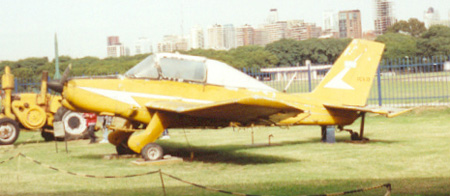 |
|
This is a mystery picture! My records claim
this to be an `IA-53 Marboreta', but I have not yet discovered any
further information about the type. It looks like an agricultural
aircraft, which would be logical for a country like Argentina. It
was pictured at the Argentine Air Force museum in Buenos Aires in
1999. |
|
Australia |
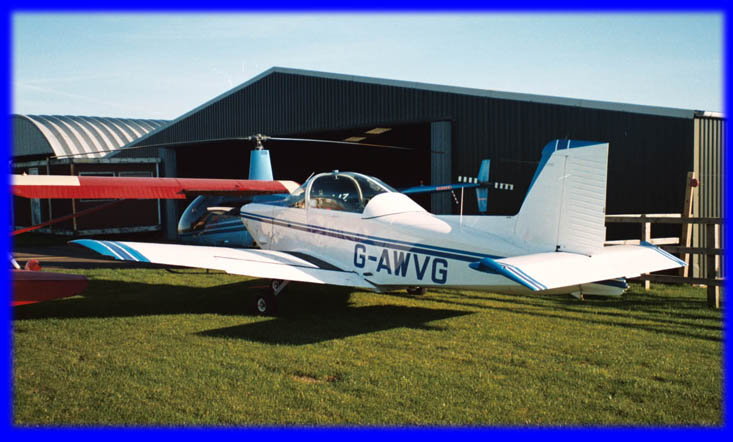 |
|
The Victa Airtourer is a sprightly little two
seater which first flew in March 1959. The Victa company in
Australia built about 170 of them, then the design passed to AESL in
New Zealand who developed the design into the military Airtrainer.
About 24 were imported into the UK by Glos-Air at Staverton. It is
typically powered by a 115hp Lycoming O-235 engine, though there are
other options. This gives it a cruising speed of 130mph and range of
670 miles. It is a compact aircraft, 22 feet long and having a wing
span of 26 feet, with gross weight of 1,750lb.
This one was pictured on a sunny Summer day at
Top Farm in 2005. |
| Austria |
 |
|
the Diamond Star DA40 is a four
seat development of the Hoffman Dimona from the early 1980s, which
was later produced as the DA20 Katana in Canada. This series of
aircraft is built from composite materials and feature modern
avionics and spacious, comfortable cockpits. The DA40 first flew in
November 1997, and was an immediate success: over 450 have been
built to date (March 2006), and the type remains in production. It
is normally powered by a 180hp Lycoming IO-360 engine, which gives
it a cruising speed of 130mph, range of 660 miles and gross weight
of 2,535lb; but there is also an option to fit it with a diesel
engine, which is far more economical. It is 26 feet 3 inches long,
with a wing span of 39 feet 5 inches.
This one was visiting Le Touquet in October 2005. |
 |
The Diamond DA42 Twin Star is
more or less a twin engines version of the DA40. Its two main
critical success factors are its very efficient Thielert Centurion
1.7 turbo diesel engines and its very efficient high aspect ratio
wing (span is 44 feet, against a length of only 27 feet 8 inches).
It also has retractable undercarriage. Like the DA40, it is all
composite. A four seater, it has a gross weight of 3,670lb, cruises
at a useful 210mph, and has a range of 1,700 miles when fitted with
long range fuel tanks. First flown in December 2002, by Summer 2006
about 140 have been sold; it is still in production.
Coventry, April 2006 |
|
Belgium |
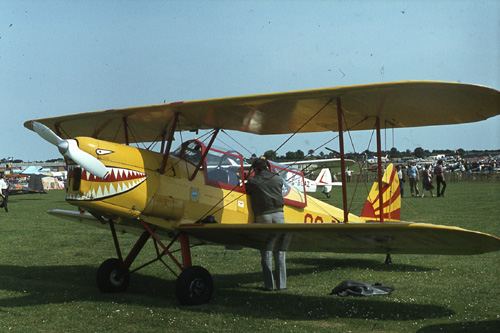 |
 |
|
The Stampe SV4 is broadly the Belgian
equivalent of the Tiger Moth. It first flew in 1933.
Originally intended as a two seat military trainer, the SV4B version
is powered by a similar 130hp Gipsy Major engine, which gives it a
top speed of 110mph and gross weight of 1,710lb. Other versions have
Renault engines. It is a very capable aerobatic aircraft, and was
for many years flown by several formation aerobatic teams. It is 22
feet 10 inches long with a wing span of 27 feet 6 inches. Top:
An SV4 fitted with an enclosed cockpit and interesting nose art, at Cranfield, July 1983. Lower:
Mirror formation by two Tiger Club Stampes, Rochester, August 1985. |
 |
The Tipsy B is a small, open cockpit two
seater designed by Belgian designer Ernest Tips and first flown in
1937. They were built at the Avions Fairey factory at Gosselies,
near Charleroi, and powered by a 62hp Walter Mikron engines. This
gave it a cruising speed of 105mph and range of 450 miles, with
gross weight of jus under 1,000lb. It is 21 feet 8 inches long, with
a wing span of 31 feet 2 inches. A further refinement was the Tipsy
Trainer, an interesting feature of which was that the instructor's
seat was beside the student's but very slightly staggered behind, so
the instructor had a better view of what the student was doing
(wrong).
This one was at Cranfield, exact date
uncertain. |
 |
The Tipsy Belfair was derived from the Tipsy
B by adding a raised rear fuselage and an enclosed cockpit, and
first flew as such in 1939. Production was prevented by the war, but
seven were built in the 1940s, three of which were assembled in
Yorkshire. The engine and dimensions are the same as for the Tipsy
B, but it is heavier (1,200lb) and slower (100mph) and with slightly
shorter range (300 miles).
This is one of the Yorkshire built machines, pictured at
Seething in December 2005 |
|
Brazil |
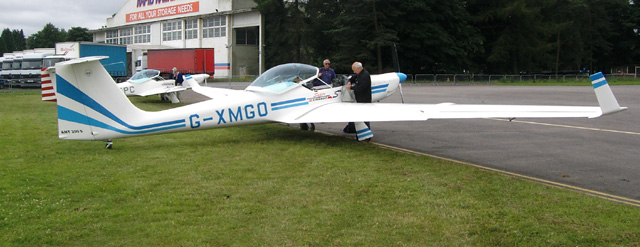 |
|
The Aeromot AMT-200S Ximango looks very sleek
and stylish, as befits a design of Rene Fournier; it is based on his
RF10. A two seater of all composite construction, it is powered by a
Rotax 912 engine, which gives it a top speed of 120mph and range of
550 miles. It is a powered glider though, so switch the engine off
and the endurance goes up! Its vast 57 foot wing span can be
shortened by folding the outer panels of the wings, which saves
hangar space. Since its first flight around 1995, it has proved very
popular, with more than 135 sold to date.
This one was at Kemble in July 2005. |
|
Canada |
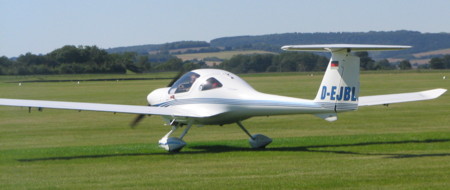 |
|
Diamond Katana
Goodwood, August 2007 |
|
Czechoslovkia |
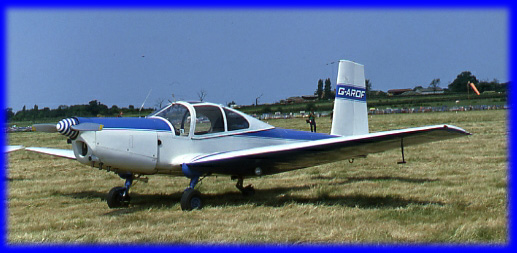 |
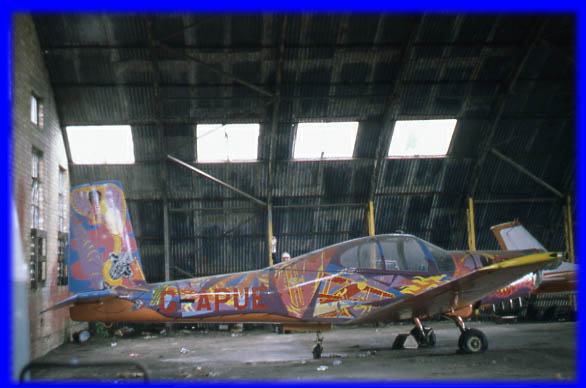 |
|
The Omnipol L-40 Meta-Sokol is a bizarre
aircraft originating from 1950s Czechoslovakia. Its retractable
undercarriage is unique in being a reverse tricycle, which makes it
look absolutely impossible to land, though I gather the technique is
just the same as a normal taildragger. It is a four seater, powered
by a rather clattery sounding 110hp Let M-332 four cylinder inline
engine. It has quite a wide wing at 33 feet 9 inches, and is 24 feet
9 inches long, with a gross weight of 2,095lb. It cruises at 125mph
and has a range of 680 miles. The top
picture was taken at Cranfield in July 1983. The lower picture shows
a Meta-Sokol in a bizarre psychedelic colour scheme at Panshangar in
the 1970s. |
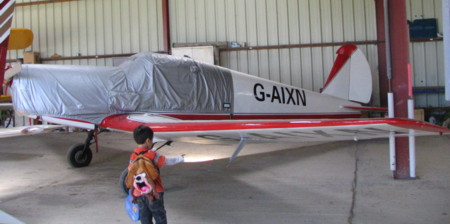 |
Hiding underneath this cover is a smart 1947
example of the Mraz M1C Sokol. Powered by a Walter Minor engine,
this was the forerunner of the Meta-Sokol. Construction is largely
of wood. Charles is asking what that thing underneath the wing is
for (it's a three-pronged pitot head: not sure why it needs three,
maybe one is a backup). Breighton, June
2007 |
|
|
The Zlin 226 Trener is a highly capable
aerobatic trainer along similar lines to the Canadian Chipmunk, but
stressed for a greater range of aerobatic manoeuvres. It first flew
in 1947. It is powered by a 160hp Walter Minor inline engine, which
gives it a cruising speed of 130mph - though if you're flying a Zlin,
cruising is unlikely to be top of your agenda.
The 226 and upgraded 526 gained an unfortunate
reputation when British aerobatic champion Neil Williams suffered a
broken wing spar in flight; the wing was trying to fold upwards, so
with amazing presence of mind he turned upside down, upon which the
wing snapped back into position; he landed by pivoting the aircraft
on the `good' wingtip so that it turned the right way up! After
that, many Zlins were fitted with a pressurised spar and a gauge to
warn the pilot if a crack was developing.
The top picture was taken by David's father at
Stoneacre in 1977, and shows a teenage David being taken for a
flight by world aerobatic champion Ladislav Bezak. The aircraft was
the one in which he had won the world aerobatic championship, and
also in which he had escaped from Soviet occupied Czechoslovakia
with his family, pursued by jet fighters: it still had the bullet
holes to prove it. The quality of flying was incomparable - during a
barrel roll, had I been holding a glass of water, I am sure not a
drop would have spilt.
(David's father's cousin was responsible for
one of the most bizarre modifications of a Zlin - spray bars
on a competition aerobatic aircraft, so it doubled as a workhorse
for the farm!)
The lower picture is of a Zlin 526 Trener-Master
at Wickenby in the mid 1970s. |
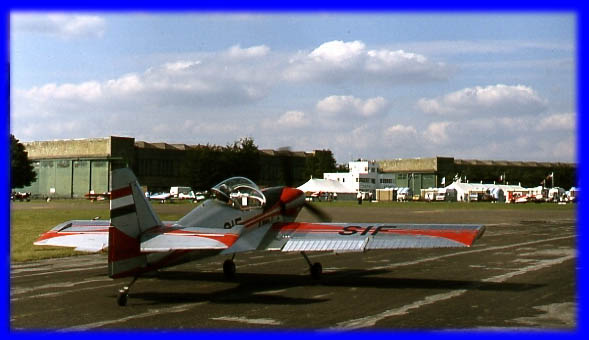 |
The Zlin 50 was one of the first of the new
generation (ie, post-Pitts) of high performance competition
aerobatic aircraft. It first flew in July 1975. Its 260hp Lycoming
AIO-540 engine gives it a top speed of 180mph. It is quite a small
aircraft (a lesson learned from the use of the Cosmic Wind in
earlier competitions), 21 feet 2 inches long and with wing span of
27 feet 11 inches. It is designed to carry just enough fuel for a
display, for lightness, so auxiliary tip-tanks are required for any
cross-country flight; they give it a range of 400 miles. An updated
version called the LS has a more powerful 300hp engine. About 75
were built. This one was at South Cerney
in August 1986. |
|
|
|
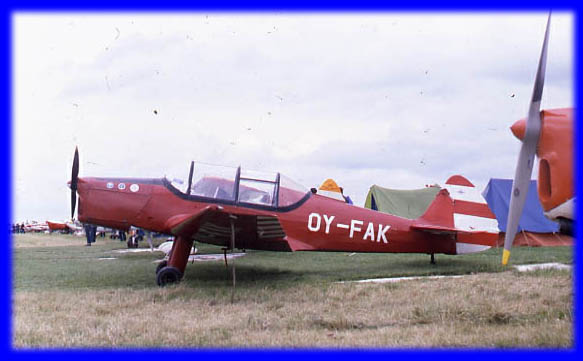 |
The SAI KZII was the second in a series of
useful machines made by Skandinavisk Aero Industri, and designed by
Viggo Kramme and Karl Gustav Zeuthen (the K and Z of the
designation). The KZII os a two seat trainer, powered by a 100hp
Blackburn Cirrus Minor engine; this gives it a cruising speed of
120mph and range of 400 miles. It first flew in December 1937. 44
were built, of which 15 were used as trainers by the Danish air
force. This one, pictures at Leicester
in July 1980, is very unusual in being fitted with a `greenhouse'
cabin. Most had an open cockpit. |
 |
The SAI KZIII was nominally designed as an
air ambulance, but this was really a pretext to allow it to fly
during the war while Denmark was under German occupation. It first
flew in September 1944. With the same engine as the KZII (I think -
I have no idea where a British engine would have come from in
wartime Denmark; maybe the prototype used a German engine), it
cruised at 115mph. 64 were built.
This one was also at Leicester in July 1980. |





|